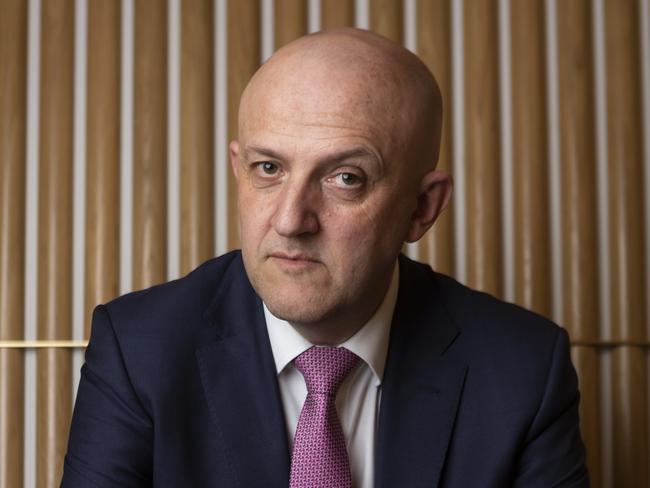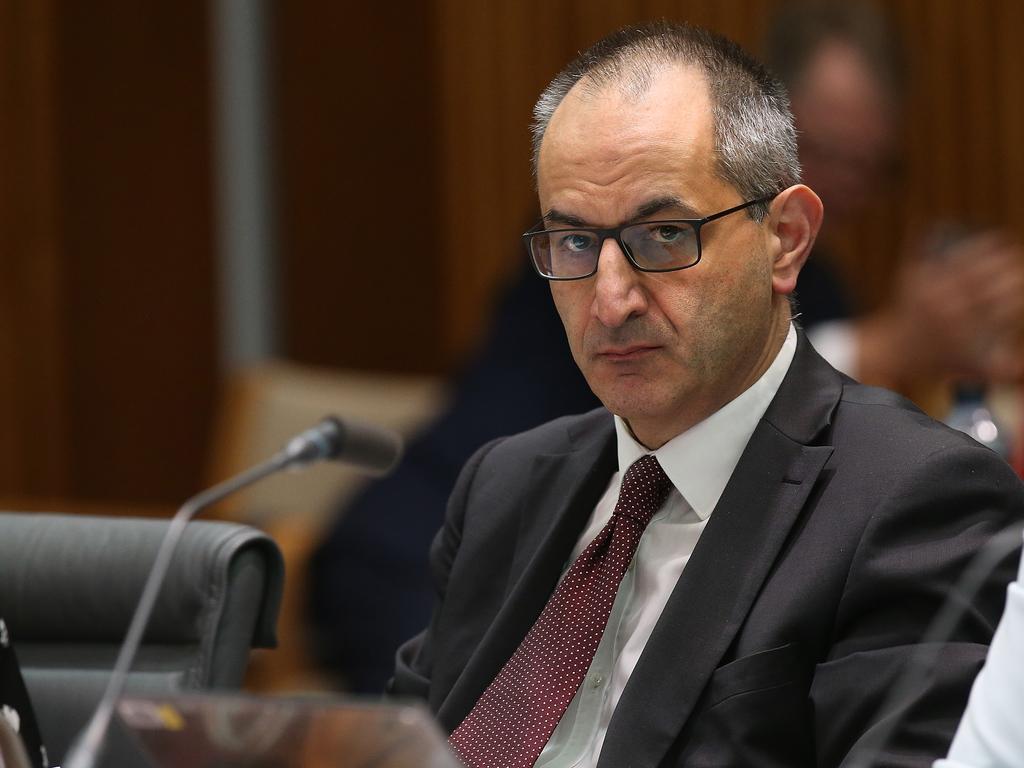The Power List: bomb plot the trigger for national security overhaul
EXCLUSIVE | A cabinet meeting after a foiled bomb plot crystallised the need for a national security overhaul.

It was during a cabinet committee meeting called in the wake of the foiled 2017 plot by jihadists to blow up a plane leaving Sydney that the need for an overhaul of Australia’s approach to national security was crystallised.
Malcolm Turnbull had taken the first step in announcing the creation of the Department of Home Affairs, bringing the scattered agencies responsible for intelligence and security under one roof.
READ MORE: Who’s who of security advisers — The network of influence | ‘Get on with it’ is the heads-up for Scott Morrison in coastal retreat | PM trims budget razor gang | Inner sanctum fiercely loyal | Confidantes and leadership group | Top mandarins lead reform agenda | Morrison’s policy shapers
Ironically, the announcement in July 2017 had come three days after the attempt to smuggle a bomb stashed in a meat grinder on to an Etihad jet. Much had been made of previous terrorist attempts and the Lindt cafe siege, but the airline bomb plot sent a shiver through the agencies. It took more than a week before the government and security agencies became aware of the plot following a tip-off from Israeli intelligence.
Sources claim it was Scott Morrison, then treasurer, who made the point that the plot had been foiled by a staff member who refused to allow the luggage to be checked in because it was overweight.
A deep dive into what went wrong began. And new people were brought in. Mike Pezzullo, picked by Morrison in 2014 to head up immigration and border protection, had just been appointed secretary of the new super department, bringing together the Australian Security Intelligence Organisation, Australian Federal Police and other intelligence agencies.
Pezzullo, a highly regarded “hawk”, was deputy chief of staff to Kim Beazley in 2001 when the idea of a home affairs department was proposed. Morrison had also been a strong proponent, as was Peter Dutton, who became the first Home Affairs Minister.
In December 2017, Mike Burgess was brought back from the private sector to lead the Australian Signals Directorate, a defence agency which the government had moved to a stand-alone statutory authority in response to the changing landscape of global threats. Burgess, who had begun a career in the agency when it was known as the Defence Signals Directorate, before going into the private sector, was regarded as a “hunter-killer” and was trained in cyber warfare.

At the same time, hardened military officer and former defence intelligence chief Paul Symon was put in charge of the foreign spy agency, the Australian Secret Intelligence Service.
Greg Moriarty, a former ambassador to Indonesia, defence intelligence expert and chief of staff to Turnbull, was appointed secretary of the Defence Department, and a month before Morrison became Prime Minister, General Angus Campbell — the former head of Operation Sovereign Borders — was made Chief of the Defence Force.

As Prime Minister, Morrison has taken national security machinery to another level. “The posture has now changed dramatically,” a senior government source said. “We wanted heads on stakes.”
With the retirement of ASIO boss Duncan Lewis in September this year, Burgess was slotted in as the new director-general of security in charge of the lead domestic spy agency. Counter-terrorism was still key, but the threats of cyber-attack and foreign interference were reaching unprecedented levels. Burgess has been tasked with putting ASIO on an aggressive footing.
Just as significant was the recall of Andrew Shearer, a national security adviser to Tony Abbott and John Howard. After Abbott was ousted in 2015, Shearer joined a strategic think tank in Washington. Turnbull brought him back last year as deputy secretary of the Office of National Intelligence, before Morrison appointed him cabinet secretary following the election.
Shearer is regarded as being among the inner sanctum of security and intelligence agency chiefs, who all have links to Morrison or each other. There is growing speculation that Shearer will take over as head of ONI when current chief Nick Warner, a public service veteran and spy boss, retires.

With the creation of Home Affairs, there are now three key national security departments: Home Affairs, Foreign Affairs (overseeing ASIS) and Defence.
Defence was integrated in the 1970s; Foreign and Trade in the 1980s, but prior to the establishment of Home Affairs, the domestic security and intelligence agencies had been scattered.
The “big five” national security figures driving Morrison’s new policy and operational security architecture are Pezzullo, Burgess, Campbell, Moriarty and his former chief of staff Phil Gaetjens, who as head of the Department of Prime Minister and Cabinet is overseeing co-ordination and funding. Shearer is said to be in constant orbit around this group.
In June, following the departure of Alastair MacGibbon as the nation’s top cyber-security adviser, Rachel Noble was appointed head of the Australian Cyber Security Centre.
Noble had returned to the ASD, which incorporates the ACSC, after working as national security chief information officer and cyber policy co-ordinator in the Department of the Prime Minister and Cabinet.

Noble, who had previously worked for Optus and as Home Affairs deputy secretary under Pezzullo, is viewed as the leading candidate to replace Burgess at ASD, which is being run on an acting basis by Lieutenant General John Frewen.
Filling out the cogs in the national security wheel are Australian Federal Police commissioner Reece Kershaw and Defence Intelligence Organisation director Major General Matthew Hall, who works closely with other agencies including the Australian Geospatial-Intelligence Organisation.

In an indication of how serious Morrison is about further integration, he last week established an elite intelligence taskforce led by ASIO, the ASD and Defence intelligence to put the country on a virtual war footing to combat national security threats.
The new arrangements see the role of ASIO expand for the first time to share classified intelligence with the Australian Federal Police on foreign interference.
The taskforce will also bring in aerial and satellite intelligence-gathering used by the Defence Department’s Australian Geospatial-Intelligence Organisation, as well as drawing on Austrac’s financial intelligence capabilities.




To join the conversation, please log in. Don't have an account? Register
Join the conversation, you are commenting as Logout